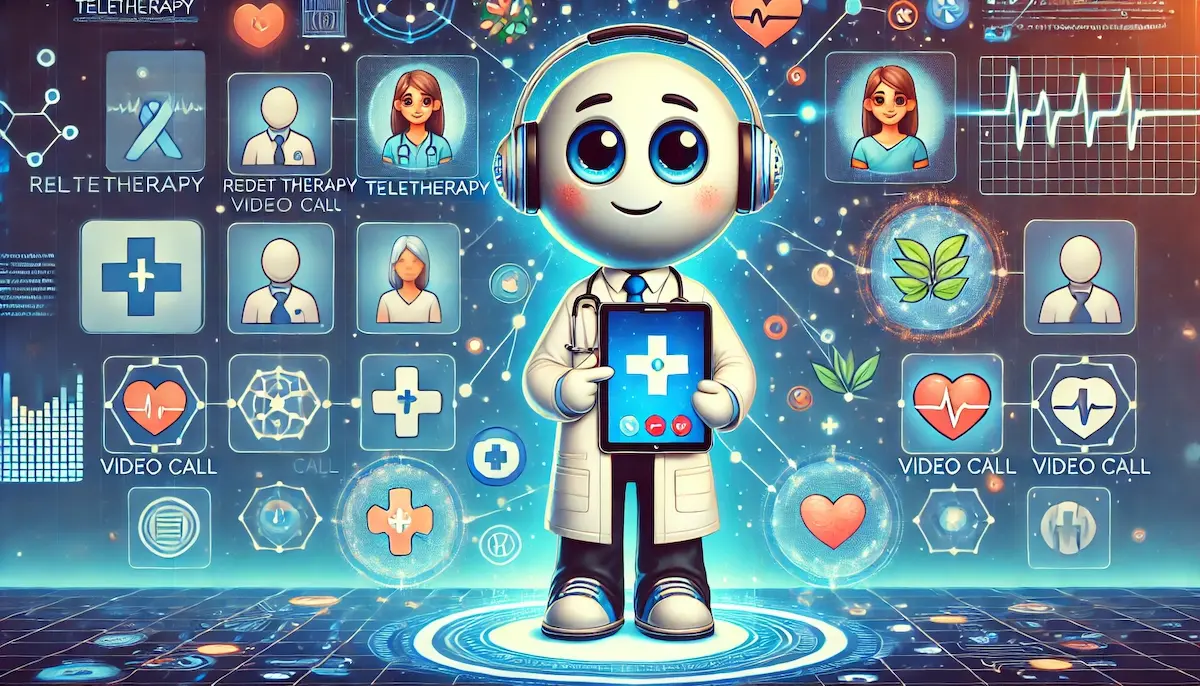Teletherapy, also known as online therapy or telepsychology, involves providing mental health services and support through digital platforms. This approach leverages video conferencing, phone calls, messaging, and mobile apps to connect therapists and clients, offering a convenient and accessible alternative to traditional in-person therapy.
What is Teletherapy?
Teletherapy uses digital communication tools to deliver mental health services remotely. This can include real-time video sessions, phone consultations, text-based therapy, and asynchronous messaging. Teletherapy allows clients to receive therapy from the comfort of their own homes, breaking down barriers such as geographic distance, transportation issues, and scheduling conflicts.
Key Components of Teletherapy
Video Conferencing
Video conferencing is one of the most common forms of teletherapy. It enables face-to-face interaction between therapists and clients, replicating the experience of in-person therapy sessions.
- Platforms: Common platforms include Zoom, Doxy.me, TheraNest, and VSee.
- Privacy and Security: Ensuring HIPAA compliance and using secure, encrypted connections to protect patient confidentiality.
Phone Therapy
Phone therapy involves conducting therapy sessions over the phone, providing an accessible option for clients who may not have access to video conferencing technology or who prefer audio communication.
- Flexibility: Phone therapy can be more flexible and less reliant on stable internet connections.
- Privacy: Ensuring conversations remain private and confidential, particularly in shared living spaces.
Text-Based Therapy
Text-based therapy includes real-time chat and asynchronous messaging between therapists and clients. This format offers flexibility and convenience, allowing clients to communicate at their own pace.
- Platforms: Services like BetterHelp and Talkspace offer secure messaging platforms for text-based therapy.
- Benefits: Enables clients to reflect on their thoughts and responses, providing a written record of the conversation.
Mobile Apps
Mobile apps facilitate teletherapy by providing platforms for scheduling, communication, and therapeutic exercises.
- Self-Help Tools: Apps like Calm and Headspace offer mindfulness and relaxation exercises that can complement teletherapy.
- Therapy Integration: Apps that integrate with teletherapy platforms to provide a seamless user experience.
Benefits of Teletherapy
Accessibility
Teletherapy increases access to mental health services, particularly for individuals in remote or underserved areas, those with mobility issues, or those with demanding schedules.
- Geographic Reach: Extends mental health services to rural and remote areas where mental health professionals may be scarce.
- Convenience: Allows clients to schedule sessions at times that work best for them, reducing the need for travel and time off work.
Affordability
Teletherapy can be more cost-effective than traditional in-person therapy, reducing costs related to transportation, childcare, and missed work.
- Lower Overhead Costs: Reduced overhead for therapists can lead to lower session fees for clients.
- Insurance Coverage: Increasingly, insurance companies are covering teletherapy services, making it more affordable for clients.
Flexibility
Teletherapy offers greater flexibility in scheduling and communication, accommodating clients’ preferences and lifestyles.
- Flexible Scheduling: Easier to fit sessions into busy schedules, including evenings and weekends.
- Variety of Communication Methods: Clients can choose their preferred method of communication, whether video, phone, or text.
Continuity of Care
Teletherapy provides continuity of care for clients who may move, travel frequently, or face disruptions that prevent them from attending in-person sessions.
- Ongoing Support: Clients can continue therapy without interruption, regardless of their location.
- Crisis Intervention: Immediate access to support during crises or emergencies.
Challenges of Teletherapy
Technical Issues
Technical problems such as poor internet connections, software glitches, and lack of access to necessary technology can hinder the effectiveness of teletherapy.
- Internet Access: Ensuring clients have reliable internet access and the necessary devices for teletherapy sessions.
- Technical Support: Providing support for clients to troubleshoot and resolve technical issues.
Privacy and Confidentiality
Maintaining privacy and confidentiality in teletherapy sessions can be challenging, particularly for clients in shared living spaces or those using public internet connections.
- Secure Platforms: Using HIPAA-compliant platforms and encrypted communications to protect client data.
- Private Spaces: Encouraging clients to find private, quiet spaces for their sessions to ensure confidentiality.
Therapeutic Relationship
Building and maintaining a strong therapeutic relationship can be more challenging in a virtual setting.
- Engagement: Therapists need to employ strategies to engage clients and build rapport in the absence of physical presence.
- Nonverbal Cues: Limited ability to observe nonverbal cues, which can be important in understanding clients’ emotions and responses.
Licensing and Regulations
Navigating the complexities of licensing and regulations for teletherapy across different states and countries can be challenging for therapists.
- Licensure: Ensuring therapists are licensed to provide services in the client’s location.
- Regulatory Compliance: Staying informed about and compliant with varying regulations and standards.
The Future of Teletherapy
The future of teletherapy is bright, with ongoing advancements in technology and increasing acceptance among clients and professionals. Key trends include:
Integration with Traditional Therapy
Teletherapy will continue to complement traditional in-person therapy, offering a hybrid model that maximizes flexibility and access.
- Hybrid Models: Combining in-person and teletherapy sessions to provide comprehensive care.
- Blended Care: Integrating teletherapy with other digital health tools and resources.
Advances in Technology
Continued advancements in technology will enhance the effectiveness and accessibility of teletherapy.
- AI and Machine Learning: Using AI to analyze communication patterns and provide insights to therapists.
- Virtual Reality: Incorporating VR to create immersive therapeutic environments and enhance treatment for conditions like PTSD and anxiety.
Greater Acceptance and Use
Increased acceptance and use of teletherapy by both clients and providers will drive its growth and development.
- Normalization: Teletherapy becoming a standard option in mental health care.
- Training and Education: Expanding training programs for therapists to develop skills in delivering effective teletherapy.
Enhanced Data and Analytics
Improved data collection and analytics will support evidence-based practices and personalized care in teletherapy.
- Data-Driven Insights: Using data to track client progress and outcomes, tailoring interventions to individual needs.
- Research and Evaluation: Conducting research to evaluate the effectiveness of teletherapy and inform best practices.
Blockfine thanks you for reading and hopes you found this article helpful.
